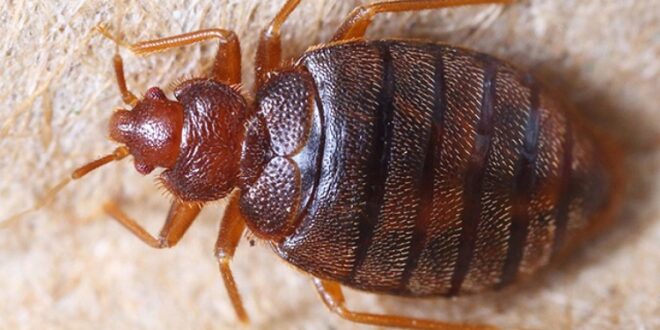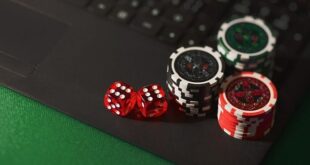There is still no one who enjoys having bed bugs in their home. These pesky insects can pose a significant threat, mainly due to their blood-feeding habits. They wait until their hosts are in a deep sleep to start biting and sucking their blood. It’s a horrifying thought. Bed bugs are attracted to human scents and are considered little vampires.
Despite their ability to hide well inside a mattress, bed bugs can still be detected. Our modern world has made it possible to find them using various methods. Here are some of the most common and effective bed bug detection methods used by professional companies.
Detection Dogs
Dogs are truly amazing creatures and are often referred to as man’s best friend. They are loyal, loving, always cheerful, and happy to see their owner and protect them from harm. Dogs build a strong bond with their humans, and will always stay by their side, no matter what. All they need in return is love and understanding. Did you know that they can also be used to detect bed bugs?
Many pest control companies use specially trained dogs to locate bed bugs in homes. Dogs used for bed bug detection are specially trained to find bed bugs by smelling the scent of a bed bugs’ odour. Bed bugs emit a unique scent of pheromones that often smell a bit musty to us. Dogs can pick up on this scent, making it easier to locate where the bed bugs are hiding, rather than finding them by sight. It may sound simple, but it’s actually a complex process that requires extensive training.
Their training process typically involves exposing them to various sources of bed bug odour and then rewarding them for finding the source. The level of accuracy of bed bug detection dogs is generally high. Some studies even show they can detect the little vampires with more than 90% accuracy. However, it’s important to note that not all dogs are equally skilled at detecting bed bugs. The level of training and experience of the handler can impact the accuracy of the results.
Active Monitors
Active monitoring devices use a mixture of carbon dioxide, human pheromones, blood, and other ingredients to attract bed bugs out of their hiding places. Some models come equipped with special traps, which can be used to catch and kill the insects instantly, as well as sensors that detect them. Active monitors are available in a variety of forms, including glue-based monitors and pheromone-based monitors. For these monitors to be effective, several factors must be taken into account, including the monitor type, the infestation severity, and its placement. It is important to note, however, that active monitors are not a substitute for thorough inspections of bed bug-infested areas.
Passive Monitors
Despite their similarities to active monitors, passive monitors are exterminators’ preferred devices. Using these devices, they test the effectiveness of bed bug treatments and assess infestation extents. It is also possible to track the movement of the infestation from one room to another using passive monitors. However, passive monitors are not meant for extermination, but only for observation.
A variety of passive monitors are available, including sticky traps and interceptor cups. These devices detect the presence of bed bugs as they move from one location to another, allowing exterminators to track the movement of the infestation. A treatment plan is then determined based on this information, and progress is monitored over time. As part of a comprehensive bed bug management plan, passive monitors are essential, since they provide valuable information. Such information is about the extent of the infestation and the effectiveness of control measures.
Visual Inspection
Despite being old-fashioned, visual inspection is still an effective way to detect bed bugs. It involves physically checking all corners and cracks of your home, including the mattress, for the presence of these blood-sucking insects. Despite taking longer than using active monitors, it can be equally effective in locating and eliminating bed bugs.
A guide on how to do a visual inspection:
- Be prepared. You need to gather all the necessary tools. This includes a flashlight, magnifying glass, and a white sheet under the mattress. Along with that, don’t forget protective clothing, such as long pants, sleeves and gloves.
- Inspect the bed. Examine your bed carefully. Pay special attention to seams, folds, and edges. What you are looking for are bed bug skins, faecal spots, and live bed bugs.
- Check all surrounding areas. The headboard, nightstand, and other furniture standing close to the bed should be checked for bed bugs. Look for cracks, crevices, and seams. If you find any, check them for evidence of an infestation.
- Examine the bedding. Remove all your bedding. This includes all sheets, pillowcases, and blankets. Inspect them for bed bugs and any evidence of their presence.
- Check the walls. Examine the walls, baseboards, and electrical outlets near the bed. These are additional places where bed bugs can hide and lay their eggs.
- Don’t forget other rooms. You need to repeat the inspection process in all other rooms of your home. Pay close attention to all the upholstered furniture, all fabrics and cracks in the walls.
- Keep a record of the evidence. Document all findings that include evidence of bed bugs. This will help you track the infestation and provide the most effective treatment.
Conclusion
Bed bugs are a nuisance and a potential health hazard, but these methods can be used to detect and get rid of them. There are various methods for detecting bed bugs within your home. From detection dogs to visual inspections, they all serve the same purpose: keeping your home free of bed bugs.
 HammBurg Be informed with latest news, reviews, entertainment, lifestyle tips, and much more.
HammBurg Be informed with latest news, reviews, entertainment, lifestyle tips, and much more.




